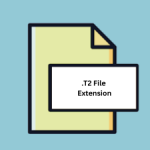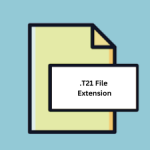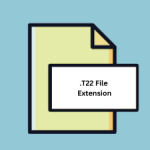.SCE File Extension

Scilab Script
| Developer | Scilab Enterprises |
| Popularity | |
| Category | Data Files |
| Format | .SCE |
| Cross Platform | Update Soon |
What is an SCE file?
In the realm of computational mathematics and scientific computing, the .SCE file extension holds significance as it pertains to Scilab, an open-source software package for numerical computations.
The .SCE extension specifically denotes Scilab Script files, which contain instructions, algorithms, and commands written in the Scilab programming language.
These files play a pivotal role in automating tasks, conducting simulations, and performing complex mathematical computations within the Scilab environment.
More Information.
The inception of .SCE files align with the foundational principles of Scilab—to empower users with a versatile and efficient platform for mathematical modeling, simulation, and analysis.
In the early stages, .SCE files served as the primary means for users to create, edit, and execute custom scripts within the Scilab environment.
These scripts encapsulated algorithms, equations, and procedural instructions tailored to specific scientific or engineering tasks.
Origin Of This File.
The genesis of .SCE files can be traced back to the development of Scilab itself. Scilab, was initially developed in the late 1980s by researchers at the French Institute for Research in Computer Science and Automation (INRIA).
It was conceived as a scientific software package to provide a free alternative to proprietary mathematical computation tools.
As Scilab gained popularity among scientists, engineers, and researchers worldwide, the .SCE file extension emerged as the standard format for saving and sharing Scilab scripts.
File Structure Technical Specification.
.SCE files are essentially plain text files that contain sequences of Scilab commands and expressions. The structure of these files adheres to the syntax and semantics of the Scilab programming language, which is akin to MATLAB in its syntax and functionality.
Typically, a .SCE file comprises a series of statements and function calls arranged in a logical sequence to accomplish a particular computational task.
The technical specifications of .SCE files revolve around their compatibility with Scilab versions, encoding standards, and platform independence.
While .SCE files are primarily associated with Scilab, they can be edited using any text editor capable of handling plain text files.
.SCE files do not impose any specific encoding requirements, making them accessible across different operating systems and text-processing environments.
How to Convert the File?
Converting .SCE files to other formats or vice versa may not be a straightforward process due to the unique nature of Scilab scripts and their reliance on the Scilab runtime environment. Users can adopt alternative strategies to achieve compatibility or interoperability:
- Exporting to Other Formats: Users can export the contents of .SCE files to alternative formats such as MATLAB scripts (.m), Python scripts (.py), or plain text files (.txt) for compatibility with other computational platforms or programming languages.
- Integration with External Tools: Leveraging third-party tools or libraries that support interoperability between Scilab and other computational environments can facilitate seamless conversion or migration of .SCE files.
Advantages And Disadvantages.
Advantage:
- Flexibility: .SCE files enable users to express complex mathematical algorithms and procedures in a concise and readable manner, facilitating collaboration and code reuse.
- Portability: .SCE files can be easily shared and distributed among colleagues and collaborators, ensuring reproducibility and transparency in scientific research.
- Integration: .SCE files seamlessly integrate with other components of the Scilab ecosystem, including libraries, modules, and graphical user interfaces, enhancing productivity and workflow efficiency.
Disadvantage:
- Dependency on Scilab: .SCE files are tightly coupled with the Scilab environment, necessitating users to have access to Scilab for executing and interpreting the scripts.
- Version Compatibility: .SCE files may encounter compatibility issues when migrated across different versions of Scilab, requiring adjustments and modifications to ensure proper execution.
- Debugging Complexity: Debugging .SCE files, especially those containing intricate algorithms or numerical computations, can be challenging due to the lack of advanced debugging tools and features in Scilab.
How to Open SCE?
Open In Windows
.SCE files can be opened on Windows using any text editor such as Notepad, Notepad++, or Visual Studio Code. Users can launch Scilab and execute the scripts directly within the Scilab environment.
Open In Linux
On Linux systems, .SCE files can be accessed and edited using text editors like Vim, Emacs, or GNU Nano. Scilab can be installed from the official repositories or downloaded from the Scilab website for executing the scripts.
Open In MAC
macOS users can utilize text editors such as TextEdit or Visual Studio Code to view and edit .SCE files. Installing Scilab from the official website enables users to run the scripts within the macOS environment.
Open In Android
To open .SCE files on Android, use cloud-based Scilab platforms or third-party mobile apps. Upload the .SCE file to a web-based service supporting Scilab or try apps enabling remote access to computational environments.
Though Scilab isn’t native to Android, these options allow running .SCE scripts for mathematical computations and simulations on your mobile device.
Open In IOS
Opening .SCE files on iOS presents challenges due to the lack of native Scilab support. However, cloud-based Scilab environments or remote desktop solutions provide avenues.
Upload the .SCE file to a web-based Scilab service accessible from an iOS browser, or utilize remote desktop apps to access a desktop environment with Scilab installed.
While not straightforward, these methods enable running .SCE scripts on iOS devices for mathematical computations.
Open in Others
Opening .SCE files on other platforms may necessitate unconventional methods. Utilize web-based text editors or remote desktop solutions to access Scilab environments.
Alternatively, explore cross-platform compatibility tools or consult with software developers for custom solutions.
While not standard, these approaches offer avenues for running .SCE scripts on diverse platforms for mathematical computations and simulations.













